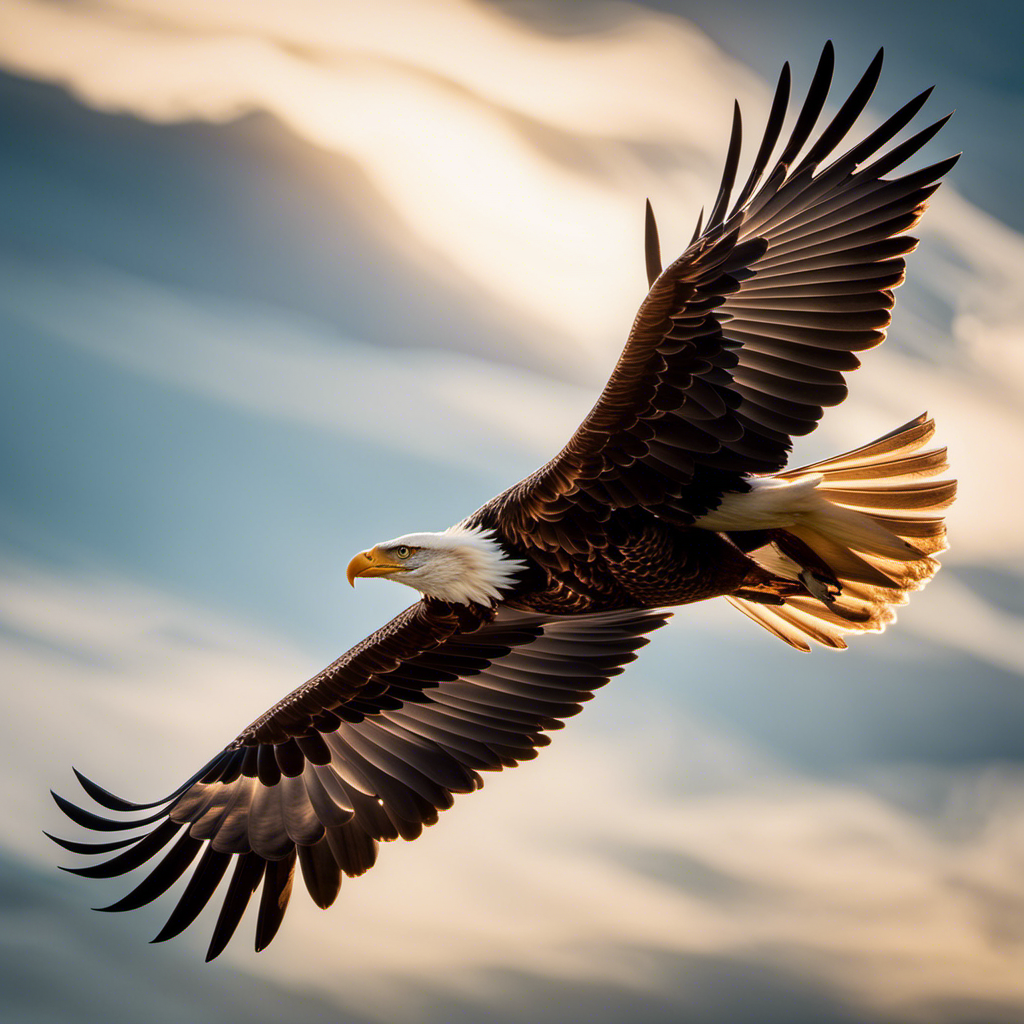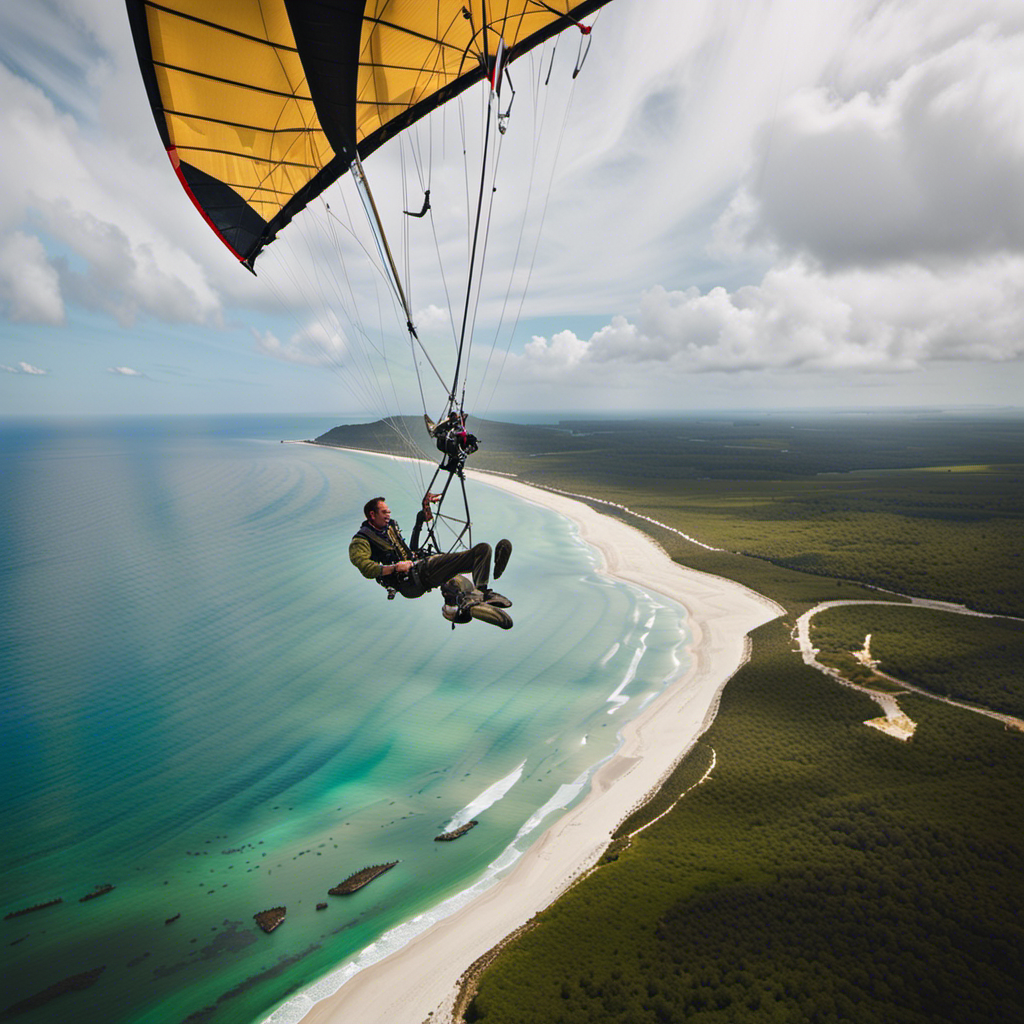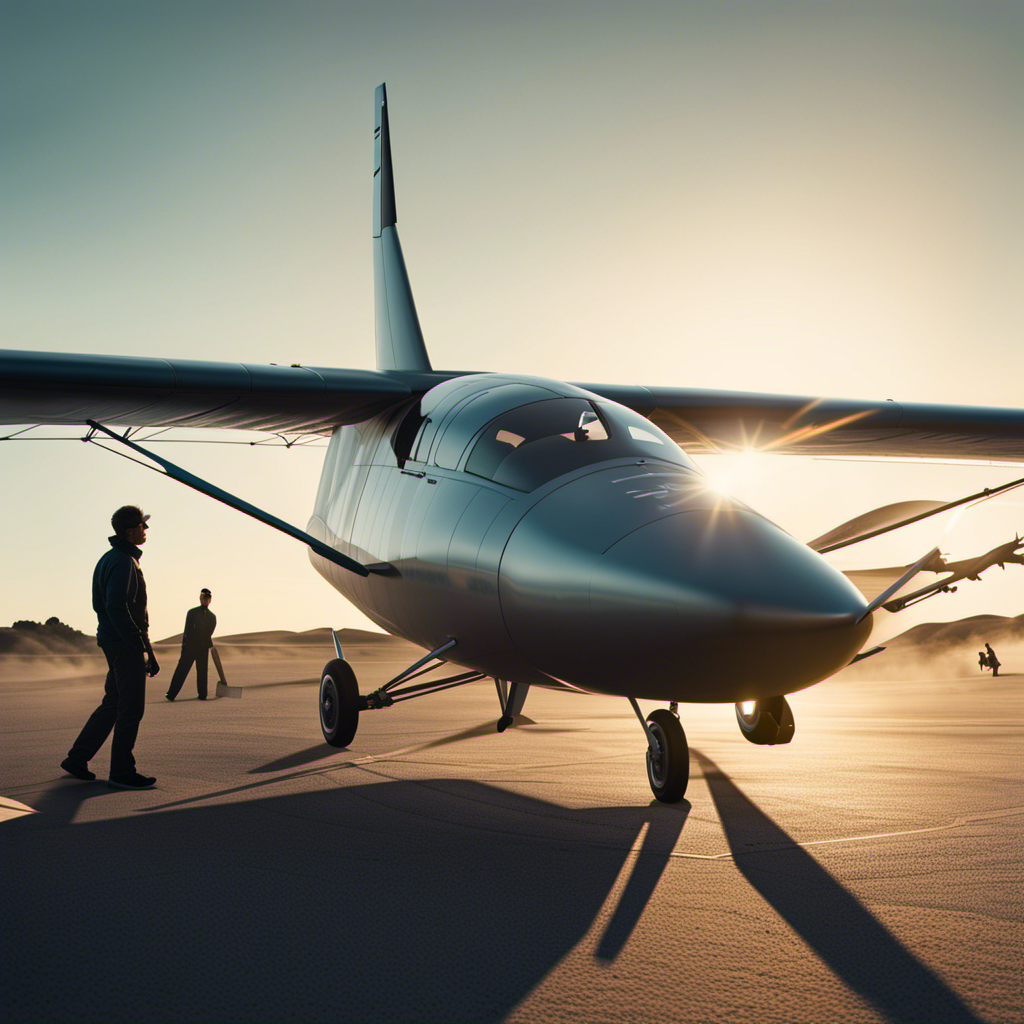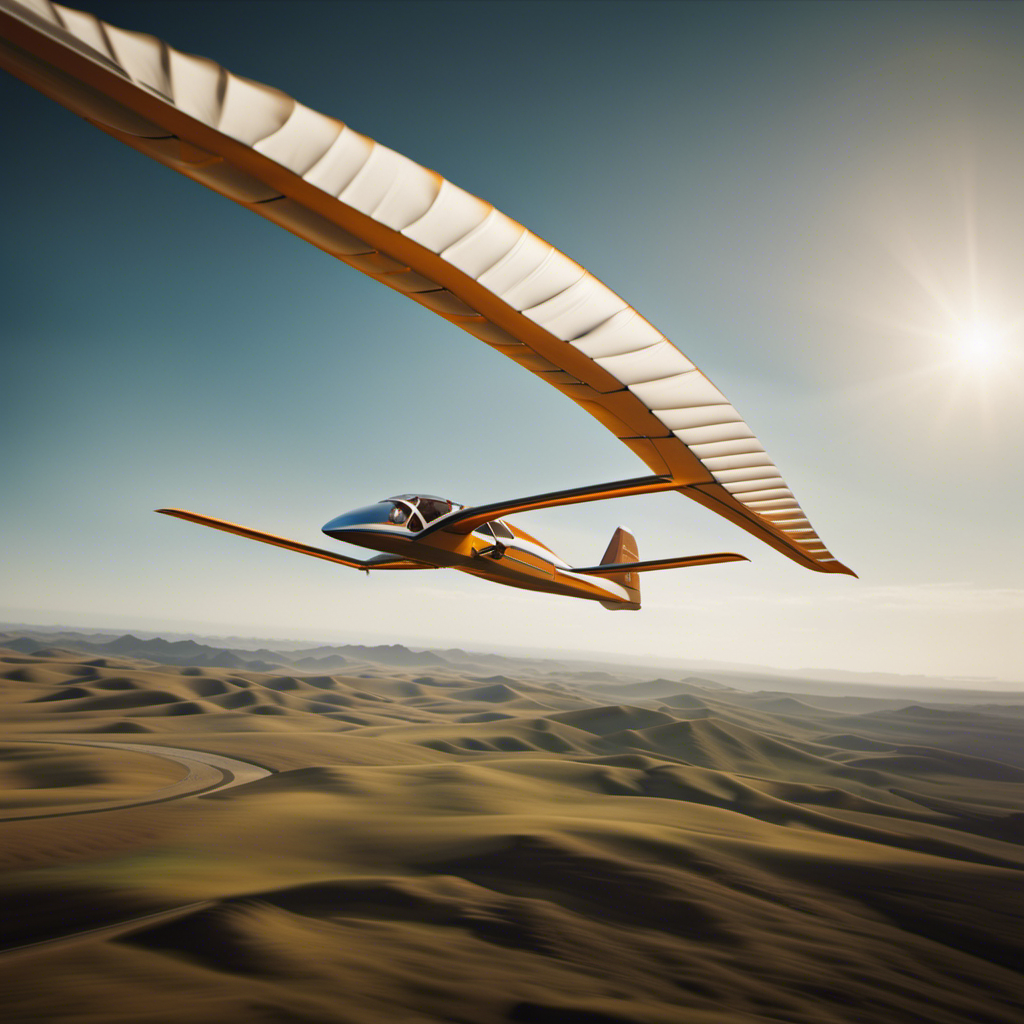As I glide effortlessly through the air, effortlessly riding unseen air currents, I can’t help but wonder: is soaring the same as flying?
In this article, we will delve into the intricacies of soaring and unravel its distinct characteristics.
By examining the differences between soaring and flying, exploring how soaring works, and examining examples from both animal and human activities, we aim to determine whether soaring can be considered a form of flight.
Prepare to embark on a journey of discovery as we uncover the secrets of soaring.
Key Takeaways
- Soaring is a form of flying that relies on utilizing air currents and thermals.
- Gliding refers to descending without any source of propulsion, while soaring actively seeks out and utilizes rising air currents.
- Soaring requires a deep understanding of physics and atmospheric conditions.
- Soaring offers the exhilaration and freedom of movement through the sky.
Definition of Soaring and Flying
Soaring means flying without flapping your wings. It is a method of flight where the bird or aircraft uses the natural forces of the environment, such as thermals or updrafts, to maintain or gain altitude.
Unlike powered flight, where an engine is used to generate lift, soaring relies on the skill of the pilot to find and utilize these air currents effectively.
The key difference between soaring and flying is that soaring is a form of flying that does not require constant flapping of wings or the use of an engine. Instead, it involves skillfully maneuvering within the natural air currents to stay aloft.
Understanding the definition and differences between soaring and flying sets the stage for exploring the characteristics of soaring.
Characteristics of Soaring
Gliding effortlessly through the air, birds and gliders take advantage of rising air currents to stay aloft. Soaring, a type of gliding, involves the skillful use of these natural air movements to maintain altitude and even gain height. Gliding techniques such as finding and utilizing thermals and updrafts are crucial for successful soaring.
Thermals are columns of warm air that rise from the ground due to temperature differences. Gliders can circle within these thermals, allowing them to gain altitude. Updrafts, on the other hand, are created when wind encounters a slope and is forced upwards. By flying along the slope, gliders can harness these updrafts to stay airborne. These techniques require precise control and knowledge of the surrounding air currents.
Transitioning to the differences between soaring and flying, it’s important to understand the unique aspects of each.
Differences Between Soaring and Flying
To differentiate between soaring and flying, you should understand the distinct characteristics of each. Soaring, unlike flying, involves specific techniques and behaviors that allow birds and other animals to stay airborne for extended periods without flapping their wings.
Here are some key differences:
-
Soaring vs gliding: Soaring involves utilizing rising air currents to gain altitude and maintain flight, while gliding involves descending gradually without flapping wings.
-
Efficiency: Soaring is more energy-efficient than flying, as it enables birds to cover long distances with minimal effort.
-
Wing shape: Soaring birds typically have long, broad wings that are optimized for gliding and capturing air currents.
-
Thermal soaring: Birds use warm air rising from the ground to gain altitude and maintain flight during migration.
-
Dynamic soaring: Birds use the difference in wind speed between the surface and higher altitudes to gain energy and speed.
Understanding these differences helps us appreciate the intricate techniques employed by soaring birds.
Now, let’s delve into how soaring works without delving into the technicalities.
How Soaring Works
Understanding how soaring works allows you to appreciate the intricate techniques employed by birds and other animals to stay airborne for extended periods.
Soaring relies on the utilization of thermals and updrafts, as well as specific flight maneuvers to maximize efficiency and minimize energy expenditure.
Glider planes, for example, utilize these same principles to achieve sustained flight without the need for an engine.
By taking advantage of rising columns of warm air, known as thermals, birds and glider planes are able to ascend to higher altitudes.
Once at a higher altitude, they can then search for another thermal to continue their flight.
This continuous cycle of ascending and descending enables them to cover great distances and stay aloft for extended periods.
Now, let’s explore some examples of soaring animals and their remarkable abilities.
Examples of Soaring Animals
Once you grasp the concept of soaring, you’ll be amazed by the wide range of animals that possess this remarkable ability.
Birds, in particular, have developed unique adaptations for soaring. One of the key adaptations is their hollow bones, which reduce their weight and make it easier for them to stay aloft. Additionally, birds have large, strong wings with specialized feathers that help them to catch the air currents and glide effortlessly through the sky.
The physics of gliding in soaring animals is fascinating. By utilizing air currents, birds can maintain their altitude and even gain height without flapping their wings. They carefully manipulate their body position and wing shape to maximize lift and minimize drag. This allows them to cover vast distances with minimal effort.
Understanding the adaptations and physics behind soaring sheds light on the advantages of this remarkable ability.
Advantages of Soaring
Birds have a distinct advantage with soaring, as it allows them to cover vast distances with minimal effort. Soaring provides numerous benefits for birds, such as energy conservation. By utilizing rising air currents, birds can maintain flight for extended periods without expending much energy. This allows them to travel long distances without the need for constant flapping.
Another benefit of soaring is increased range. It enables birds to explore larger territories and access new food sources. They can effortlessly glide over landscapes, surveying the area for potential resources or suitable nesting sites.
Soaring also helps birds avoid predators. It allows them to gain altitude quickly, which helps them evade predators on the ground. By utilizing thermals and updrafts, they can stay airborne and out of reach of potential threats.
These advantages of soaring in the natural world demonstrate how birds have adapted to optimize their flight capabilities.
Now, let’s explore how this concept of soaring has been incorporated into various human activities.
Soaring in Human Activities
Humans have found innovative ways to incorporate the concept of soaring into various activities. These activities include gliding, paragliding, and hang gliding. Paragliding, in particular, has gained significant popularity in recent years. It involves flying a lightweight, free-flying, foot-launched glider aircraft with no rigid structure. The pilot is suspended in a harness below the fabric wing, using the wind and thermal currents to stay airborne.
Another activity that showcases the concept of soaring is glider racing. This competitive sport involves racing gliders over a predetermined course. The pilots utilize air currents and thermals to gain speed and altitude, making the race more thrilling and challenging.
These activities not only provide a thrilling experience but also allow humans to experience the exhilaration of soaring like birds. The feeling of freedom and being able to ride the wind is truly unique and captivating.
However, it’s important to consider the limitations of soaring. Weather conditions play a crucial role in determining the success and safety of these activities. Strong winds, turbulence, and unpredictable weather patterns can pose risks to pilots. It’s essential for participants to have proper training, knowledge, and experience to ensure their safety while enjoying the thrill of soaring.
Limitations of Soaring
One drawback to paragliding is the reliance on wind and thermal currents for staying airborne. The success of a paragliding flight depends heavily on the availability and strength of these natural forces. However, despite this limitation, paragliding enthusiasts have developed various techniques to maximize their time in the air and improve their soaring skills.
These techniques include:
- Ridge soaring: Flying along the edge of a mountain or ridge to catch the upward wind deflected by the terrain.
- Thermal soaring: Utilizing rising columns of warm air to gain altitude and extend the flight duration.
- Dynamic soaring: Taking advantage of the energy in the wind gradient to continuously gain speed and altitude.
- Cross-country soaring: Planning and executing long-distance flights by combining different soaring techniques along the route.
- Soaring competitions: Events where pilots showcase their skills by navigating set courses, demonstrating their ability to soar efficiently and cover significant distances.
Despite the limitations imposed by relying on wind and thermal currents, paragliding offers a range of techniques and competitions that allow pilots to extend their flights and explore the possibilities of soaring. This demonstrates the similarities between soaring and traditional flying, highlighting the exciting challenges and rewards that come with mastering the art of staying aloft.
Similarities Between Soaring and Flying
Despite the reliance on wind and thermal currents, paragliding offers techniques and competitions that showcase the similarities between soaring and traditional flying. When we talk about soaring, we are referring to the act of staying aloft in the air without the use of an engine. This is achieved by utilizing the natural elements and air currents to maintain and gain altitude.
Similar to traditional flying, paragliding requires a thorough understanding of aerodynamics, control techniques, and navigation. Both activities involve the exhilaration of being airborne and the freedom of movement through the sky.
Additionally, soaring in nature provides numerous benefits, such as the opportunity to appreciate the beauty of the surroundings, the tranquility of the open sky, and the feeling of harmony with the natural world.
As we explore the question of whether soaring is considered flying, it is important to delve deeper into the distinctions between the two.
Conclusion: Is Soaring Considered Flying?
To sum it up, you can appreciate the similarities between soaring and traditional flying, and understand whether or not soaring is considered flying.
-
Soaring is a form of flying that relies on utilizing air currents and thermals to gain altitude and maintain flight. It requires a deep understanding of the physics of soaring and the ability to read the ever-changing atmospheric conditions.
-
Gliding, on the other hand, refers to the act of descending through the air without any source of propulsion. It is a type of unpowered flight that relies solely on gravity and the shape of the aircraft to stay aloft.
-
While soaring and gliding are closely related, they are not synonymous. Soaring involves actively seeking out and utilizing rising air currents to maintain or gain altitude, while gliding refers to the act of descending without any upward lift.
Frequently Asked Questions
What are some examples of animals that use soaring as a primary mode of transportation?
Soaring is a specialized form of flying that relies on wind currents. Some animals, like hawks and eagles, use soaring as their primary mode of transportation. It has advantages, such as energy conservation, but also disadvantages, like limited maneuverability.
What are the advantages of soaring compared to other forms of locomotion?
The advantages of soaring in locomotion are numerous. Compared to other forms of locomotion, soaring allows for efficient travel over long distances, conservation of energy, and the ability to take advantage of air currents for sustained flight.
How do human activities incorporate the concept of soaring?
Incorporating soaring into daily human activities is evident in the popularity of paragliding, where individuals use wind currents to glide through the air. This thrilling sport has gained traction worldwide, with over 3 million paragliders estimated to exist globally.
Are there any limitations or drawbacks to the process of soaring?
There are limitations and drawbacks to the process of soaring. Some limitations include the need for specific weather conditions and terrain, while drawbacks can include the risk of accidents and the reliance on external factors.
Can you give some examples of animals that exhibit both soaring and flying behaviors?
Animals like eagles, albatrosses, and vultures exhibit both soaring and flying behaviors. These creatures can effortlessly glide through the air using thermal updrafts, utilizing their wings to stay aloft for extended periods.
Conclusion
After analyzing the characteristics and differences between soaring and flying, it can be concluded that soaring is indeed a form of flying.
Soaring involves the skillful utilization of air currents to maintain altitude and travel through the sky, much like a bird gracefully gliding on the wind.
It is a mesmerizing display of precision and finesse, as the soaring individual or animal effortlessly navigates the invisible forces of nature.
Soaring is a testament to the harmonious relationship between living beings and the natural world, showcasing the wonders of flight in its purest form.









